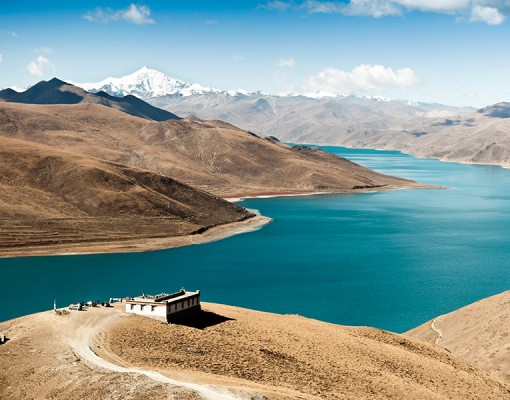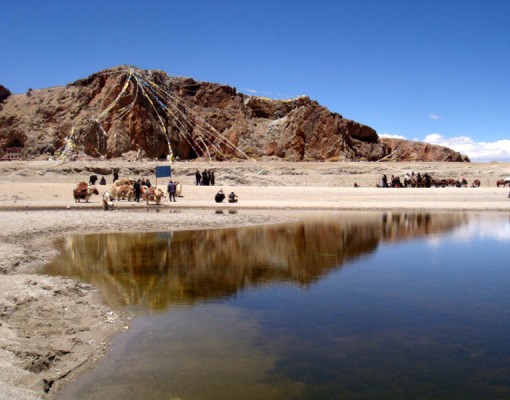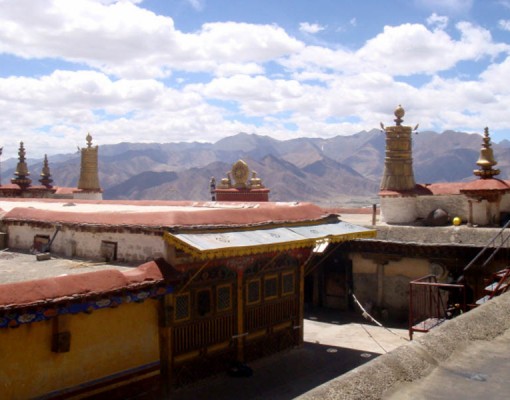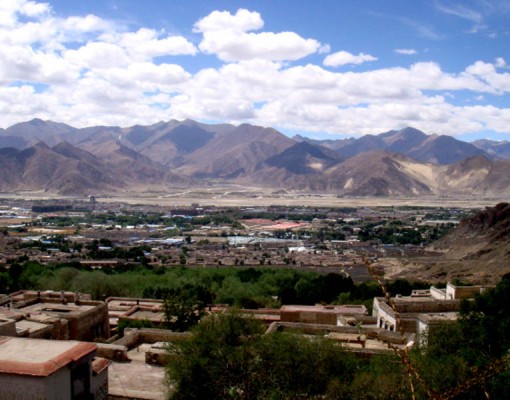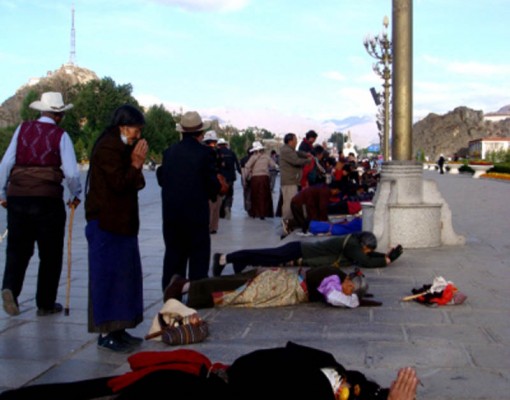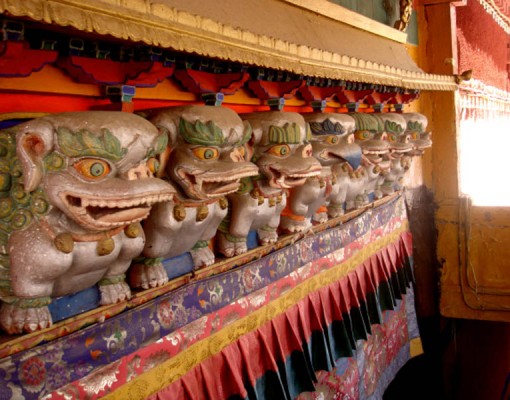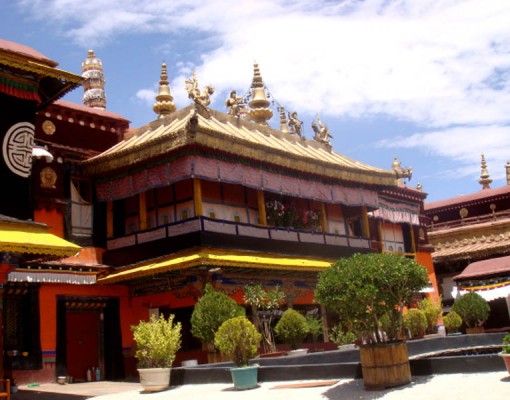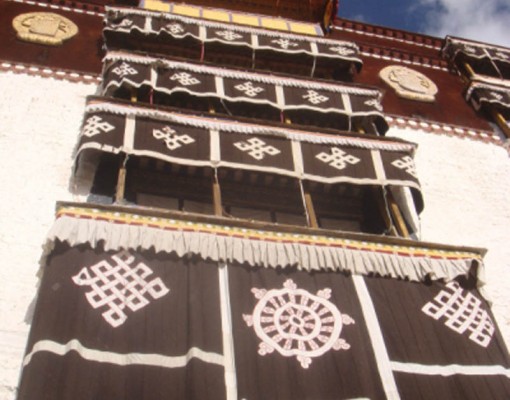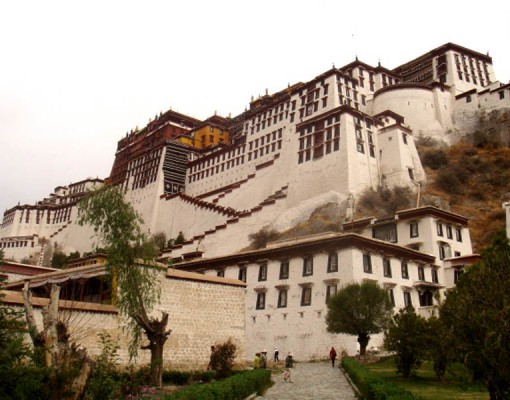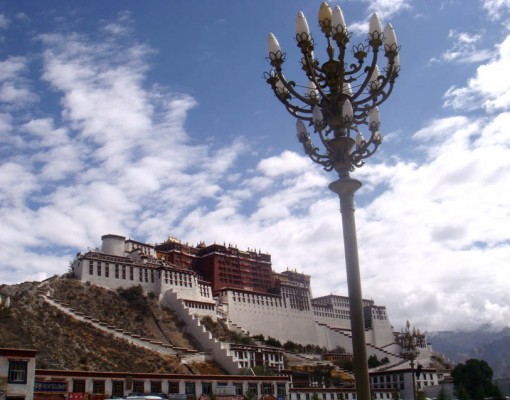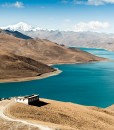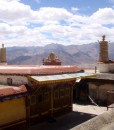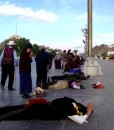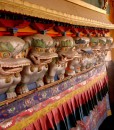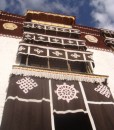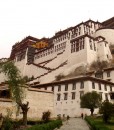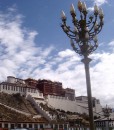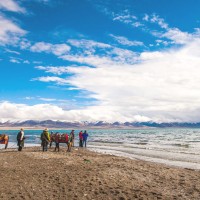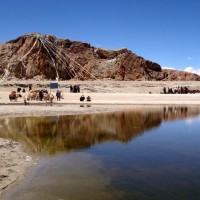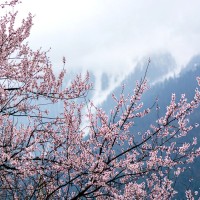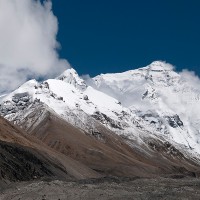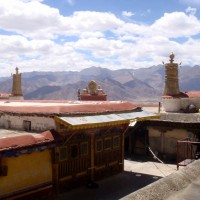>Tibet
8 Days Central Tibet with Nepal
Kathmandu – Lhasa – Gyantse – Shigatse
A classic tour covering the cultural centers of Tibet namely Lhasa, Shigatse and Gyantse. The highlights of this tour include ancient monasteries, unique overland landscapes, snow-covered mountains and dramatic high passes. Gain insight to the Tibetan Buddhist culture and experience exotic culture of the Tibetan locals.
Important Notes:
1) Itinerary is NOT available from November to March annually.
2) All Tibet tours are conducted by Tibet Tourism Bureau for private groups only.
3) The hotels in the LUXURY category applies only to Kathmandu & Lhasa hotels. Standard hotels apply for other areas.
Day 1 | D | Hotel
Kathmandu
Upon arrival meet and transfer to hotel. Briefing and welcome drink. Late afternoon walking tour around Thamel, a popular tourist district in Kathmandu Valley and a bustling bazaar which offers a glimpse of Nepal’s vibrant ethnic culture.
Note:
Divine staff will collect your passport to process your Tibet permit at the China Embassy. You permit will be ready in the evening.
Day 2 | B | Hotel
Kathmandu – Lhasa
After breakfast transfer to airport to connect flight to Lhasa. Upon arrival at Gongar airport and drive to Lhasa. Drive will takes about 2 hrs. Upon reaching check in hotel. Rest for the more acclimatization. Late afternoon sightseeing tour to visit Jokhang Temple and Barkhor Bazaar.
Jokhang Temple
Jokhang Temple (“House of the Lord”) in Lhasa is the holiest site in Tibetan Buddhism, attracting crowds of prostrating Tibetan pilgrims and curious foreign tourists every year. It hosts the annual Great Prayer Festival, as well as all ceremonies of initiation for the Dalai Lama and Panchen Llamas.
Barkhor Bazaar
Barkhor Bazaar is the oldest street in Lhasa, as well as the most representative. It is a place full of religious atmosphere and a world of exotic articles. Traditional Tibetan houses and narrow lanes in and around the street whisper the stories of old Lhasa. Barkhor Street is also a marketplace in which visitors can buy many beautiful souvenirs. Varied shops stand on both sides of the street and thousands of floating stands are on every corner. Most of them offer the prayer wheels, long-sleeve ‘chuba’ (the Tibetan people’s traditional clothes), Tibetan knives and some religious articles for sale.
Day 3 | B | Hotel
Lhasa
After breakfast full day city tour in Lhasa.
Potala Palace
Situated on the Red Hill of central Lhasa, Potala Palace is the highest ancient palace in the world, reaching 3,767.19m (12,359.55ft) at the topmost point. Potala named after a holy hill in South India is a Sanskrit word meaning “Abode of the Avalokitesvara (Buddha of Mercy).” Legend has it that in the 7th century, to greet his bride Princess Wen Cheng of the Tang Dynasty (618B.C. – 907B.C.) of China, the then Tibet King Songtsen Gampo built a 9-storey palace with a thousand rooms up on the Red Hill and named it Potala. Later, with the collapse of the Songtsen Gampo Dynasty, the ancient palace was almost destroyed in wars. What we see at present is the architecture of the Qing Dynasty (1644B.C. – 1911B.C.) and the continuous expanding work outcome since the 17th century.
Drepung Monastery
The monastery was established in 1416 by Tsong Khapa’s disciple Jamyang Qoigyi,Situated at the foot of the Mountain Gambo Utse, 5 kilometers (3.1 miles) from the western suburb of Lhasa, the Drepung Monastery is known as the most important monastery of Gelugpa in Tibetan Buddhism.
Sera Monastery
Located at the foot of Tatipu Hill in the northern suburb of Lhasa City, Sera Monastery is one of three famous monasteries in the city along with the Drepung Monastery and the Ganden Monastery. It is dedicated to the Gelugpa or Yellow Hat Sect, a branch of Tibetan Buddhism, founded by Tsong Khapa. Jamchen Chojey, one of Tsong Khapa’s disciples built it in 1419 during the Ming Dynasty (1368-1644). The monastery was named Sera which means wild rose in the Tibetan language, because the hill behind it was covered with wild roses in bloom when it was built.
Day 4 | B | Hotel
Lhasa – Gyantse
After breakfast drive to Gayantse. Today we cross 2 passes namely Karo La (5010m) and Kamba La (4794m). You will also pass by the most fascinating natural lake Yamdroke Ts. After that visit Khumbun Stupa , Palkor Monastery and Salu Monastery. Overnight at Gyantse.
The Palkhor Monastery
The Palkhor Monastery also called Palcho Monastery it is quite different from other monasteries of Tibet. Structured as a typical Tibetan Buddhism monastery it was built in 1418 and has remarkably remained intact and unscathed to this day. The most remarkable feature of this monastery is that it is the only monastery that houses monks from different orders. The monks from the Gelugpa, Sakyapa and Kahdampa orders stay in this monastery with noticeable harmony. The Main Assembly Hall of Palkhor Monastery, Tshomchen, was built between the end of the 14th century and the beginning of the 15th century.
Kumbum Stupa
Kumbum Stupa is one of the most distinctive temples in the world. It is an unusual architectural masterpiece with its nine levels rise in the manner of a step pyramid. Its construction started in 1418 and it was completed in 1427.
Shalu Monastery
Shalu Monastery is a small monastery 22km south of Shigatse in Tibet. It was founded in 1040 by Chetsun Sherab Jungnay, one of Tibet’s greatest scholars and teacher about Buddhism scriptures.
Day 5 | B | Hotel
Gyantse – Shigatse
After breakfast drive to Shigatse. Upon reaching check in hotel. After lunch visit Tashilhunpo Monastery and the flea market of Shigatse. Overnight at hotel.
Tashilhunpo Monastery
Tashilhunpo Monastery is one of the Six Big Monasteries of Gelugpa (or Yellow Hat Sect) in Tibet. Also called the Heap of Glory, the monastery is located at the foot of Drolmari (Tara’s Mountain), Shigatse. Founded by the First Dailai Lama in 1447, the monastery’s structure was expanded by the Fourth and successive Panchen Lamas. Tashilhunpo Monastery covers an area of nearly 300,000 square meters (3,229,279 sq. ft.). The main structures found in the Tashilhunpo Monastery are The Maitreya Chapel, The Panchen Lama’s Palace and The Kelsang Temple. Tashilhunpo is the seat of the Panchen Lama since the Fourth Panchen Lama took charge in the monastery, and there are now nearly 800 lamas.
Day 6 | B | Hotel
Shigatse – Lhasa
After breakfast drive to Lhasa for about 4 hours. Upon arrival check in hotel. Free to explore on your own in the city Centre.
Day 7 | B | Hotel
Lhasa – Kathmandu
After breakfast drive to Lhasa airport and connect short flight to Kathmandu. Upon arrival meet and transfer to hotel.
After lunch– city tour visit Kathmandu Durbar Square, a UNESCO World Heritage Site, and if you are lucky, you will get a glimpse of the famous Kumari, the world’s only living Goddess. This complex of palaces, courtyards and temples like Hanumandhoka Palace, Kumari Ghar (Abode of the Living Goddess), Taleju temple, built between the 12th and 18th centuries, used to be the seat of the ancient Malla Kings of Kathmandu.
After that, visit Bouddhanath Stupa, one of the world’s largest Stupa built in the fifth century AD.. It looms 36 meters high and presents one of the most fascinating specimens of stupa design with hundreds of prayer wheels and 108 small images of Buddha all around. All the Buddhist throng to this stupa to take part in the sacred rituals during the Buddhist festivals.
Afternoon explore Asan Tol. It is one of the most well-known historical locations in the city and is famed for its bazaar, festival calendar and strategic location. The bazaar attracts shoppers from all over Kathmandu because of the tremendous variety of merchandise sold here, ranging from foodstuffs, spices and textiles to electronics and bullion. Asan is also one of the popular tourist spots in the city because of its architectural sights and charming ambiance.
Evening enjoy a sumptuous traditional Nepalese Cuisine with Cultural Performance.
Day 8 | B
Kathmandu – Departure
After breakfast transfer to airport for fly out according to your flight schedule.
Package Includes:
Nepal
• All the transportation including airport transfer as per above itinerary
• All accommodation on twin sharing basis as per itinerary
• All the meals as per above itinerary
• City tour with English speaking tour guide
• All the meals as per itinerary
Tibet
• Kathmandu-Lhasa-Kathmandu air ticket with all the taxes
• Regular non-A/C Transportation though out the trip in Tibet
• Visa fee &Tibet Travel Permit
• Lake Nam Tso permit and day trip tour
• Entrance fees for all the sightseeing tour, Monasteries entrance fee with
• English speaking Tibetan tour guide as per itinerary
• All necessary airport/hotel/airport transfers.
• Accommodation in Tibet twin-sharing basis with breakfast tourist class standard hotel.
Package Excludes:
• International airfare to Nepal
• Nepal Visa fee (apply on arrival)
• Meals not indicated in the itinerary (for Tibet)
• Travel insurance
• All alcoholic and other beverages
• All personal expenses
• Liabilities of loss, theft and damages
• Tips

